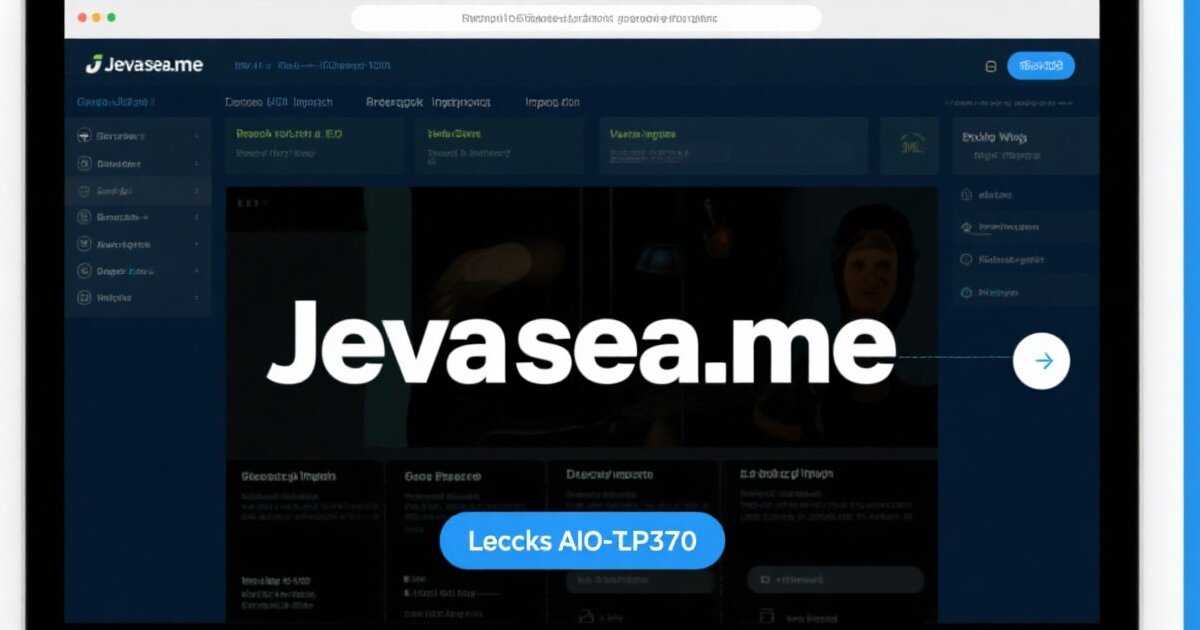1. Introduction to DPSIT
In today’s hyper-connected world, the acronym DPSIT carries a dual significance that reflects two of the most dynamic trends shaping our digital economy. On one side, DPSIT stands for Digital Payment Security & IT, a field dedicated to protecting sensitive financial transactions in an era where cashless payments dominate. On the other, DPSIT represents Design, Prototype, Share, Iterate, Test, a modern design methodology that empowers teams to build innovative products through rapid experimentation and continuous improvement.
Understanding both interpretations is essential for professionals, businesses, and consumers who want to thrive in an economy where technology evolves faster than regulations. Whether safeguarding online banking systems or creating a user-friendly app, DPSIT embodies the same core philosophy: trust and efficiency are achieved through iteration, feedback, and relentless improvement.
This dual perspective helps decision-makers appreciate that security and creativity are not separate domains. Instead, they reinforce one another—secure payment systems require thoughtful design, and effective design benefits from secure infrastructure. By exploring both sides of DPSIT, readers gain a comprehensive view of how this powerful concept drives progress across finance, technology, and user experience.
2. DPSIT as Digital Payment Security & IT
2.1 History and Growth of DPSIT
The roots of Digital Payment Security & IT trace back to the late 1990s when online shopping platforms like Amazon and eBay began to popularize electronic transactions. As e-commerce flourished, so did opportunities for cybercrime. Early systems relied on basic SSL encryption, but the rapid growth of global payments exposed vulnerabilities that hackers exploited to steal credit card numbers and personal information.
Key milestones followed quickly. The launch of Payment Card Industry Data Security Standards (PCI DSS) in 2004 established global guidelines for merchants to safeguard customer data. Financial institutions and emerging fintech companies invested heavily in encryption, tokenization, and multi-layer authentication to stay ahead of increasingly sophisticated attacks. Partnerships between banks, technology providers, and cybersecurity firms fostered a new ecosystem focused on protecting digital payments.
Today, DPSIT represents more than isolated security measures—it encompasses a full suite of IT frameworks, compliance protocols, and real-time monitoring systems. Its growth mirrors the rise of mobile wallets, cryptocurrency exchanges, and instant peer-to-peer payments, proving that robust security is not just a feature but a fundamental driver of digital commerce.
2.2 Importance of DPSIT in Today’s Digital Economy
In 2025 and beyond, digital payments are no longer optional—they are the backbone of global commerce. From mobile banking to contactless retail, billions of transactions occur every second. DPSIT ensures these exchanges remain private, reliable, and legally compliant. Without it, consumer trust would crumble, and the economic engine of e-commerce would stall.
For businesses, DPSIT provides a competitive advantage by guaranteeing customers a safe and seamless checkout experience. Strong security measures reduce fraud-related losses, protect brand reputation, and help companies meet evolving regulatory requirements such as GDPR in Europe or CCPA in California. For consumers, DPSIT means confidence that their credit card numbers, digital wallets, and personal identifiers are protected from malicious actors.
Moreover, governments and payment processors increasingly demand proof of security compliance. Firms that ignore DPSIT risk heavy fines, legal liabilities, and loss of market access. In this landscape, DPSIT is not simply a technical safeguard; it is a strategic necessity that fuels economic growth by enabling innovation without compromising trust.
2.3 Common Threats to Digital Payment Security
Despite technological advances, cybercriminals continue to evolve their tactics, making awareness of threats a core part of DPSIT. Among the most common dangers:
- Phishing attacks trick users into revealing credentials through fake emails or websites.
- Malware and ransomware infiltrate devices to capture sensitive data or lock systems until a ransom is paid.
- Man-in-the-middle (MITM) attacks intercept communication between customers and payment gateways, altering transaction details for illicit gain.
- Weak passwords and poor credential management allow hackers to access accounts with minimal effort.
- Public Wi-Fi vulnerabilities provide easy entry points for attackers monitoring unsecured networks.
Real-world breaches underscore these risks. High-profile cases like the 2013 Target data breach or recent cryptocurrency exchange hacks have resulted in billions of dollars in losses and widespread reputational damage. These incidents highlight the need for proactive DPSIT strategies that combine technical safeguards with consumer education to prevent human error from undermining advanced systems.
2.4 Role of DPSIT in Defending Against Cyber Attacks
The primary mission of DPSIT is to stay one step ahead of attackers. To accomplish this, organizations deploy a combination of advanced encryption, multi-factor authentication (MFA), and real-time monitoring. Encryption scrambles data during transmission, ensuring that even if intercepted, the information remains unreadable. MFA adds extra layers of protection by requiring users to verify their identities through multiple channels, such as biometrics or one-time passcodes.
Artificial intelligence and machine learning have become game changers in DPSIT. These technologies analyze transaction patterns to detect anomalies within milliseconds, flagging suspicious activity before it causes harm. Blockchain solutions, with their decentralized and tamper-resistant ledgers, offer additional safeguards for peer-to-peer payments and cryptocurrency transactions.
Human factors are equally critical. Regular employee training on phishing awareness, password management, and incident response reduces the likelihood of breaches caused by human error. In essence, DPSIT is a holistic defense system that blends technology, policy, and education to create resilient payment ecosystems.
2.5 Career Opportunities in DPSIT Security
As cyber threats grow, the demand for skilled professionals in Digital Payment Security & IT continues to skyrocket. Career paths are diverse and lucrative, ranging from cybersecurity analysts, penetration testers, and payment security engineers to risk management specialists and compliance officers. These roles are vital for financial institutions, fintech startups, government agencies, and e-commerce giants alike.
Certifications such as CISSP (Certified Information Systems Security Professional), CISA (Certified Information Systems Auditor), and PCI DSS compliance credentials significantly enhance employability. Professionals with expertise in AI-driven fraud detection or blockchain security are particularly sought after.
Salary prospects reflect the high stakes. According to industry reports, cybersecurity specialists in payment security often earn well above the IT average, with senior roles exceeding six-figure annual incomes. With continuous advancements in technology, ongoing education and networking are crucial for staying relevant in this fast-evolving field.
3. DPSIT as Design, Prototype, Share, Iterate, Test
3.1 Introduction to the DPSIT Design Framework
The second interpretation of DPSIT—Design, Prototype, Share, Iterate, Test—is revolutionizing how products and services are created. This five-step methodology breaks complex projects into manageable phases, enabling teams to move from concept to market-ready solution with agility and confidence.
- Design: Identify the problem, define goals, and sketch initial solutions.
- Prototype: Build a preliminary model to visualize the concept.
- Share: Present the prototype to stakeholders or users for feedback.
- Iterate: Refine the design based on insights and repeat the cycle.
- Test: Validate the final product through usability and performance checks.
This framework encourages collaboration, early feedback, and risk mitigation. Instead of waiting until the end to discover flaws, teams catch issues early, saving time and resources while boosting creativity.
3.2 Importance of DPSIT in the Modern Design Process
In the past, design projects often followed a rigid, linear path, leaving little room for adjustment once development began. DPSIT changes that paradigm by emphasizing iteration and feedback. By sharing prototypes early and frequently, designers invite input from stakeholders, clients, and end users, ensuring that the final product aligns with real-world needs.
This approach reduces costly late-stage revisions and accelerates time-to-market. For example, a UX team creating a mobile banking app can gather user reactions to navigation flows before investing in full-scale coding. In industries where user experience directly impacts revenue, such as e-commerce or SaaS, DPSIT provides a competitive edge.
Moreover, DPSIT fosters a culture of innovation. Teams are encouraged to experiment, knowing that failure is not final but a stepping stone toward improvement. This mindset drives creativity while maintaining a clear path to measurable outcomes.
3.3 Evolution from Traditional Design to DPSIT
Historically, design processes relied heavily on extensive documentation and static mockups. Changes required lengthy approval cycles, making it difficult to respond to market shifts. The rise of digital collaboration tools like Figma, Adobe XD, and Miro ushered in a new era where real-time feedback became possible.
DPSIT aligns perfectly with agile and lean methodologies, allowing teams to pivot quickly based on user data and emerging trends. Instead of releasing a “finished” product only to discover usability issues, teams now deploy small, testable iterations. This evolution not only accelerates development but also improves product quality by incorporating continuous feedback loops.
3.4 Case Studies of Successful DPSIT Implementation
Numerous organizations have demonstrated the power of DPSIT:
- Tech Startups: A mobile app company used rapid prototyping and iterative testing to refine features, resulting in a product that achieved a 40% higher user retention rate.
- Automotive Industry: A leading car manufacturer applied DPSIT to design a next-generation dashboard, engaging stakeholders early to integrate safety features efficiently.
- E-Commerce Platforms: By testing navigation prototypes with real customers, an online retailer reduced cart abandonment rates by 25% before full launch.
These examples highlight how DPSIT saves costs, improves user satisfaction, and drives innovation across diverse sectors.
3.5 Advantages and Limitations of the DPSIT Approach
The DPSIT methodology offers clear advantages:
- Faster time-to-market through rapid prototyping and testing.
- Continuous improvement fueled by ongoing feedback.
- Enhanced collaboration among cross-functional teams.
However, DPSIT is not without challenges. Multiple iterations require time and resources, which may strain budgets. Managing diverse feedback can create conflicting priorities, leading to “iteration fatigue” if not carefully organized. To balance speed with quality, teams must establish clear goals, prioritize user-driven insights, and maintain disciplined project management practices.
3.6 Future Possibilities for DPSIT in Design
The future of DPSIT design is poised for transformation through emerging technologies. Artificial intelligence and machine learning can analyze user data to suggest smarter iterations automatically. Virtual and augmented reality (VR/AR) will enable immersive prototyping, allowing users to interact with products in lifelike environments before production.
Sustainability is another frontier. As businesses adopt eco-friendly practices, DPSIT frameworks will incorporate environmental impact assessments into each design cycle, ensuring innovation aligns with global sustainability goals. The next decade promises a landscape where DPSIT is enhanced by predictive analytics, global collaboration, and green design principles.
4. Bridging the Two Worlds of DPSIT
Although Digital Payment Security & IT and Design, Prototype, Share, Iterate, Test appear unrelated, they share striking similarities. Both rely on iteration to stay ahead of evolving challenges—whether those challenges are cybercriminals adapting their tactics or users demanding better experiences. Both prioritize trust as the ultimate outcome, be it trust in secure financial transactions or confidence in a product’s usability.
Consider fintech applications as a prime example of overlap. A mobile banking app must combine airtight payment security with an intuitive interface. Here, DPSIT’s security measures protect sensitive data, while the design framework ensures a frictionless user journey. Businesses that master both sides of DPSIT gain a decisive advantage in delivering solutions that are both safe and delightful.
5. Conclusion: The Future of DPSIT in a Hyper-Digital World
As technology continues to blur the boundaries between finance, design, and user experience, DPSIT stands out as a guiding philosophy for the digital age. In payment security, it drives the creation of encrypted, AI-powered systems that outpace cyber threats. In design, it empowers teams to prototype, test, and perfect products in record time.
The future will demand even greater adaptability. Cybercriminals will develop new tactics, and consumers will expect faster, more personalized services. DPSIT’s dual framework—focused on resilience, iteration, and trust—offers the roadmap for meeting these challenges. Whether you are a cybersecurity specialist, a UX designer, or an entrepreneur, embracing DPSIT means embracing continuous improvement as the path to lasting success.










